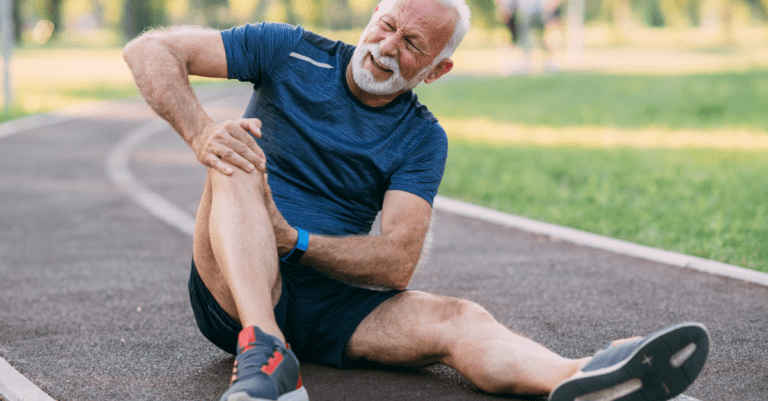Medicinal Mustard
Believe it or not, the yellow mustard in your fridge can help relieve joint pain and even arthritis. Even better, mix up a mustard “plaster” using a quarter cup of flour, two tablespoons of dry (or ground) mustard, and enough water to form a paste. Don’t apply this mixture directly onto your skin, as the heat of the mustard will burn you. Instead, spread the paste onto a cloth, then fold the cloth in half so the mixture is completely concealed. Place the mustard “pack” over your sore knee, and layer another towel on top to add some pressure.
Be Your Own Masseuse
Is your knee sore? If it doesn’t hurt to do so, give the muscle at the back of the knee a gentle massage. Although it might seem counterintuitive to massage the back of your knee when the front is hurting, it can help stimulate circulation and ease the pain.
Don’t Buy That!
If your joint pain is caused by arthritis, those shoe insoles marketed as knee-pain relievers will very likely have no effect. A recent study published in the Journal of the American Medical Association concluded that lateral wedge shoe inserts do not help reduce arthritic knee pain. So, skip the insoles and consult your doctor for other treatment options.
Padded Protection
If you’ve got a chore that requires kneeling on hard ground—such as scrubbing floors or tending the garden—slip on a pair of kneepads. The same goes for any sports you play that can land you hard on your knees, such as soccer, volleyball, basketball, hockey, or roller-skating.
(Vapo)Rub Away Knee Pain
A timeless treatment for coughs and congestion, Vicks VapoRub can also ease soreness in joints and muscles, thanks to its analgesic combo of menthol and camphor. Massage the cream all over your knee, cover with a dry towel, and rest it until the pain subsides. Repeat two or three times per day, max.
Keep Those Frozen Peas!
A bag of frozen veggies makes the perfect DIY ice pack, as it will naturally mold around the leg when laid on top. First wrap the “ice pack” with a towel to protect your skin, and leave on for only 10–20 minutes; iced any longer and you could get frostbite, which is super painful and can even lead to blistering. Repeat several times per day to reduce swelling, pain, and inflammation.
Muscle Maneuvers
Chronic pain in the knee is often caused by the muscles around it: A cramped, tight, or overused thigh muscle might not even hurt directly at the thigh, but it can certainly lead to trouble in your knee. If your knee pain isn’t a result of an injury, infection, or inflammation, try stretching out these muscular “trigger points” using a tennis ball. Lie down on one side—the side of your achy knee—and set a tennis ball beneath your thigh. Bring your top leg forward and bend it up to increase the pressure on your bottom leg against the ball. This trigger-point massage may hurt a bit, but that means you’re getting at the root of your knee-pain problem. To target all possible trigger points in your thigh, start at the top of the muscle and then repeat at the middle and bottom.
Vitamin C for Your Knee
Vitamin C is a true nutritional dynamo. In addition to all its wonderful antioxidant, immunity-boosting powers, experts say that it can also help ward off the cell-damaging effects of free radicals and the onset of osteoarthritis, a nasty disease of the joints. Get your daily dose of vitamin C with fresh fruits and veggies like oranges, kiwi, strawberries, tomatoes, broccoli, and green bell peppers.
For more all natural remedies from all around the internet, check out our Health and Beauty Tips board on Pinterest. And don’t forget to sign up for our newsletter and follow us on Facebook and Instagram!
Image courtesy of Shutterstock.




